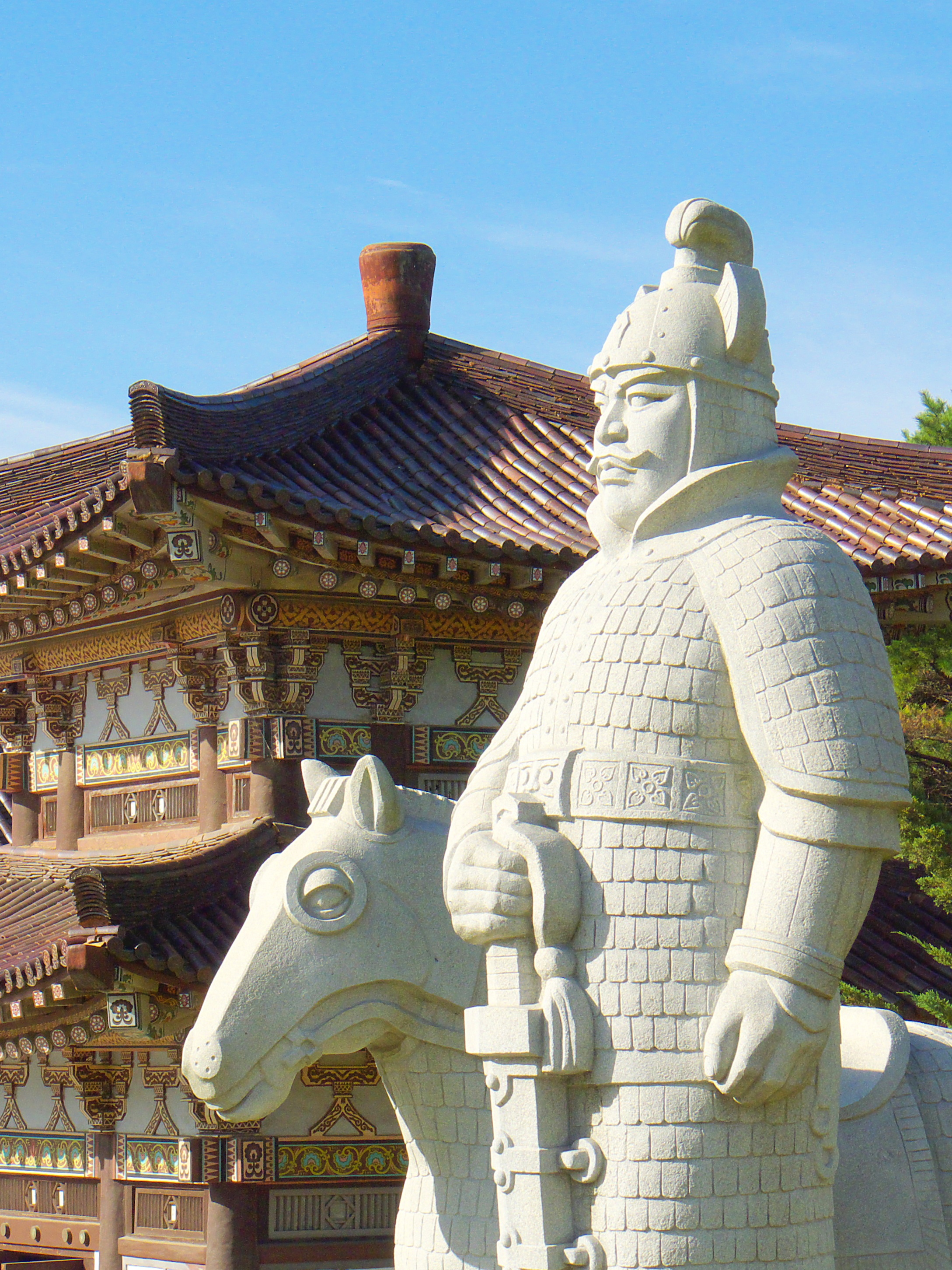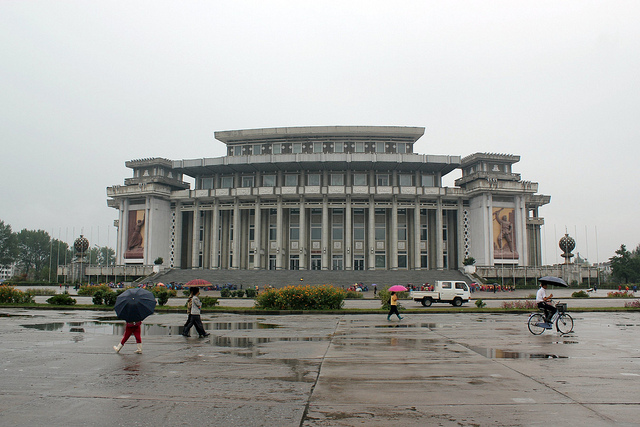|
People's Palace Of Culture
The People's Palace of Culture (Korean: 인민문화궁전; Hanja: 人民文化宮殿) is a palace and theater located in Pyongyang, North Korea. Construction for the building finished in January 1974 and was opened to the public in April 1974. South Korean President Kim Dae-jung was given a welcome ceremony at the People's Palace of Culture during the 2000 inter-Korean summit. The building is four stories tall and has a basement floor as well. See also * List of theatres in North Korea This is a list of theaters in North Korea. * April 25 House of Culture * Central Youth Hall * East Pyongyang Grand Theatre * Hamhung Grand Theatre * International Cinema Hall * Kalma Theatre * Mansudae Art Theatre * Mansudae People's Theatr ... References {{Theat-struct-stub Theatres in North Korea Palaces ... [...More Info...] [...Related Items...] OR: [Wikipedia] [Google] [Baidu] |
Chung-guyok
Chung-guyŏk (Central Ward) is one of the 18 '' guyok'' which constitute the city of Pyongyang, North Korea. The district is located in the center of the city, between the Pothonggang Canal and Taedong River, and is bordered to the north by Moranbong-guyok, to the northwest by Potonggang-guyok, and to the south by Pyongchon-guyok. Overview As the centre of Pyongyang, the district holds many of the city's most important buildings. The famous Kim Il-sung Square is located along the banks of the Taedong river, together with the Grand People's Study House, which is the national library of North Korea. Chung-guyok was once the historical centre of Pyongyang, and was almost completely obliterated during the Korean War by American bombing. Vestiges of the old city can still be seen, and the district is home to several of North Korea's National Treasures, including the rebuilt Potong and Taedong Gates, the Pyongyang Bell, the Ryongwang Pavilion, and the Sungryong and Sungin Halls. ... [...More Info...] [...Related Items...] OR: [Wikipedia] [Google] [Baidu] |
Pyongyang
Pyongyang (, , ) is the capital and largest city of North Korea, where it is known as the "Capital of the Revolution". Pyongyang is located on the Taedong River about upstream from its mouth on the Yellow Sea. According to the 2008 population census, it has a population of 3,255,288. Pyongyang is a directly administered city () with equal status to North Korean provinces. Pyongyang is one of the oldest cities in Korea. It was the capital of two ancient Korean kingdoms, Gojoseon and Goguryeo, and served as the secondary capital of Goryeo. Much of the city was destroyed during the First Sino-Japanese War, but it was revived under Japanese rule and became an industrial center. Following the establishment of North Korea in 1948, Pyongyang became its ''de facto'' capital. The city was again devastated during the Korean War, but was quickly rebuilt after the war with Soviet assistance. Pyongyang is the political, industrial and transport center of North Korea. It is home to ... [...More Info...] [...Related Items...] OR: [Wikipedia] [Google] [Baidu] |
North Korea
North Korea, officially the Democratic People's Republic of Korea (DPRK), is a country in East Asia. It constitutes the northern half of the Korean Peninsula and shares borders with China and Russia to the north, at the Yalu (Amnok) and Tumen rivers, and South Korea to the south at the Korean Demilitarized Zone. North Korea's border with South Korea is a disputed border as both countries claim the entirety of the Korean Peninsula. The country's western border is formed by the Yellow Sea, while its eastern border is defined by the Sea of Japan. North Korea, like its southern counterpart, claims to be the legitimate government of the entire peninsula and adjacent islands. Pyongyang is the capital and largest city. In 1910, Korea was annexed by the Empire of Japan. In 1945, after the Japanese surrender at the end of World War II, Korea was divided into two zones along the 38th parallel, with the north occupied by the Soviet Union and the south occupied by the U ... [...More Info...] [...Related Items...] OR: [Wikipedia] [Google] [Baidu] |
Korean Language
Korean (South Korean: , ''hangugeo''; North Korean: , ''chosŏnmal'') is the native language for about 80 million people, mostly of Koreans, Korean descent. It is the official language, official and national language of both North Korea and South Korea (geographically Korea), but over the past years of political division, the North–South differences in the Korean language, two Koreas have developed some noticeable vocabulary differences. Beyond Korea, the language is recognised as a minority language in parts of China, namely Jilin, Jilin Province, and specifically Yanbian Korean Autonomous Prefecture, Yanbian Prefecture and Changbai Korean Autonomous County, Changbai County. It is also spoken by Sakhalin Koreans in parts of Sakhalin, the Russian island just north of Japan, and by the in parts of Central Asia. The language has a few Extinct language, extinct relatives which—along with the Jeju language (Jejuan) of Jeju Island and Korean itself—form the compact Koreanic l ... [...More Info...] [...Related Items...] OR: [Wikipedia] [Google] [Baidu] |
Hanja
Hanja (Hangul: ; Hanja: , ), alternatively known as Hancha, are Chinese characters () used in the writing of Korean. Hanja was used as early as the Gojoseon period, the first ever Korean kingdom. (, ) refers to Sino-Korean vocabulary, which can be written with Hanja, and (, ) refers to Classical Chinese writing, although "Hanja" is also sometimes used to encompass both concepts. Because Hanja never underwent any major reforms, they are mostly resemble to '' kyūjitai'' and traditional Chinese characters, although the stroke orders for some characters are slightly different. For example, the characters and as well as and . Only a small number of Hanja characters were modified or are unique to Korean, with the rest being identical to the traditional Chinese characters. By contrast, many of the Chinese characters currently in use in mainland China, Malaysia and Singapore have been simplified, and contain fewer strokes than the corresponding Hanja characters. In J ... [...More Info...] [...Related Items...] OR: [Wikipedia] [Google] [Baidu] |
Kim Dae-jung
Kim Dae-jung (; ; 6 January 192418 August 2009), was a South Korea, South Korean politician and activist who served as the eighth president of South Korea from 1998 to 2003. He was a 2000 Nobel Peace Prize recipient for his work for democracy and human rights in South Korea and in East Asia in general, and for peace and reconciliation with North Korea and Japan. He is also the only Korean to have won the Nobel Prize to date. He was sometimes referred to as "the Nelson Mandela of Asia". Kim was the first opposition candidate to win the presidency. Early life Kim Dae-Jung was born on 6 January 1924, but he later edited his birth date to 3 December 1925 to avoid conscription under Korea under Japanese rule, Japanese colonial rule. Kim was the second of seven children. His father, Kim Un-sik, was a farmer. Kim was a 12th generation descendant of Kim Ik-soo (김익수;金益壽) who served as Second Minister of the Board of War (병조참판;兵曹參判) and the civil minister ( ... [...More Info...] [...Related Items...] OR: [Wikipedia] [Google] [Baidu] |
2000 Inter-Korean Summit
2000 inter-Korean summit was a meeting between South Korean president Kim Dae-jung and the Democratic People's Republic of Korea's supreme leader Kim Jong-il, which took place in Pyongyang from June 13 to June 15, 2000. It was the first inter-Korean summit since the Korean War 1950-1953. Regarding the first inter-Korean summit, the Nobel Peace Prize was awarded to Kim Dae-Jung for his work for democracy and human rights in North and South Korea in East Asia in general. Kim Dae Jung's Sunshine Policy for reconciliation with North Korea was recognized. Overview The first summit was held June 13–15, 2000, in Pyongyang. Kim Jong-il, the North Korean supreme leader, met with Kim Dae-jung, the South Korean president at the time, who received the Nobel Peace Prize for his efforts as this summit occurred seemingly as a result of his Sunshine Policy, which South Korea maintained until President Lee Myung Bak adopted a more hardline position against North Korea. Details * It was ... [...More Info...] [...Related Items...] OR: [Wikipedia] [Google] [Baidu] |
List Of Theatres In North Korea
This is a list of theaters in North Korea. * April 25 House of Culture * Central Youth Hall * East Pyongyang Grand Theatre * Hamhung Grand Theatre * International Cinema Hall * Kalma Theatre * Mansudae Art Theatre * Mansudae People's Theatre * Moranbong Theatre * People's Palace of Culture * Ponghwa Art Theatre * Pyongyang Circus * Pyongyang Grand Theatre * Pyongyang Puppet Theatre (formerly State Arts Theatre, originally Pyongyang Public Hall) * Pyongyang Moranbong Circus * Taedongmoon Cinema External links Democratic People's Republic of Korea - Theatres() {{Asia in topic, List of theatres in North Korea North Korea, officially the Democratic People's Republic of Korea (DPRK), is a country in East Asia. It constitutes the northern half of the Korean Peninsula and shares borders with China and Russia to the north, at the Yalu (Amnok) and ... Theatres ... [...More Info...] [...Related Items...] OR: [Wikipedia] [Google] [Baidu] |





